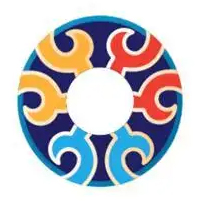Chinese Ancient Crafts: The Origin and Development of Cloisonné
Cloisonné is a colorful and luxurious enamel product, which is regarded as an imperial craftsmanship by the Chinese royal family. It has a history of more than 600 years, but experts and scholars still hold different views on the origin of Cloisonné.
I. Originated from China's Cloisonné craftsmanship
One viewpoint believes that Cloisonné craftsmanship originated in China. As early as the Spring and Autumn Period, enamel materials were already embedded on the hilt of King Goujian's sword. In the history of Chinese metal craftsmanship, enamel has been used for a long time, and it didn't reach its prosperous period until the Ming Dynasty.
Another viewpoint believes that the appearance of Cloisonné craftsmanship in China began in the Yuan Dynasty. According to the "Biographies of Foreign Countries" in the "History of Song Dynasty," there was a region called "Da Shi Guo" in the Arabian area, which brought the copper-based filigree enamel craftsmanship to China. According to relevant historical materials, in the second half of the 13th century, the Mongolian army invaded West Asia and captured a group of skilled craftsmen as slaves, who then made luxurious daily items for the Mongol nobles. In this context, Arab craftsmen skilled in making metal-based enamel came to China with their firing techniques and raw materials.
II. The sky-high price of cloisonné in the Qianlong period
In 2010, Christie's Hong Kong auction house sold a pair of Qianlong emperor's cloisonné enamel double crane incense burners for HKD 129 million, setting the highest auction price for cloisonné enamel throughout history. These incense burners are believed to be commissioned by Qianlong emperor to celebrate the birthday of his father, Yongzheng emperor, symbolizing peace and longevity.
III. The huge cloisonné enamel pagoda in the Qianlong period
During the reign of Qianlong emperor, he ordered the production of large-scale cloisonné enamel pagodas twice, with 6 pagodas each time, totaling 12 huge pagodas. These pagodas are grand and magnificent, requiring numerous craftsmen to collaborate on complex craftsmanship and costing a large amount of silver.
IV. The confidentiality and transmission of cloisonné enamel in the Ming and Qing dynasties
In the Ming and Qing dynasties, the emperors had dedicated workshops for making enamel vessels, and all the enamel craftsmen could only master one or two processes. The purpose of this was to ensure the confidentiality of the imperial enamel craftsmanship and also to achieve the ultimate perfection in the production of imperial cloisonné enamel.
V. The development of cloisonné enamel as a national gift
In the late 19th century, cloisonné appeared on the international stage as a representative of traditional Chinese art and became the preferred national gift of the Chinese nation. For example, in 1793, Emperor Qianlong of China presented a pair of cloisonné objects to the British envoy as a return gift. Since then, cloisonné has frequently appeared in various diplomatic occasions and has been loved by the international community.
VI. Cloisonné in the Folk
During the reign of Emperor Jiaqing, cloisonné began to enter the folk. Emperor Jiaqing traded cloisonné as a commodity and established workshops to produce high-end gifts. This enabled cloisonné, which had been restricted to the imperial palace for 600 years, to step out of the palace walls and become an art form that more people understand and appreciate.

